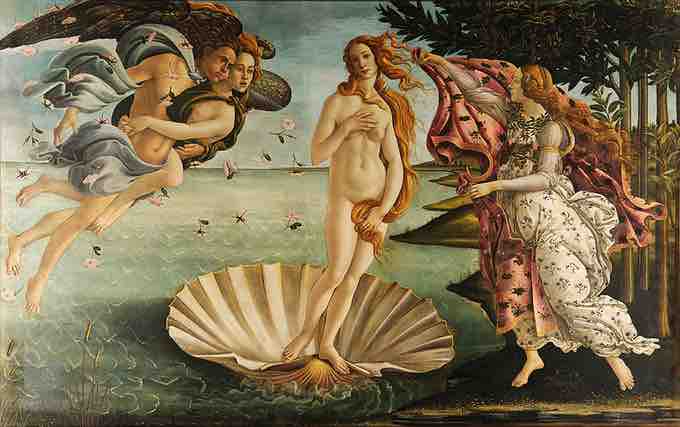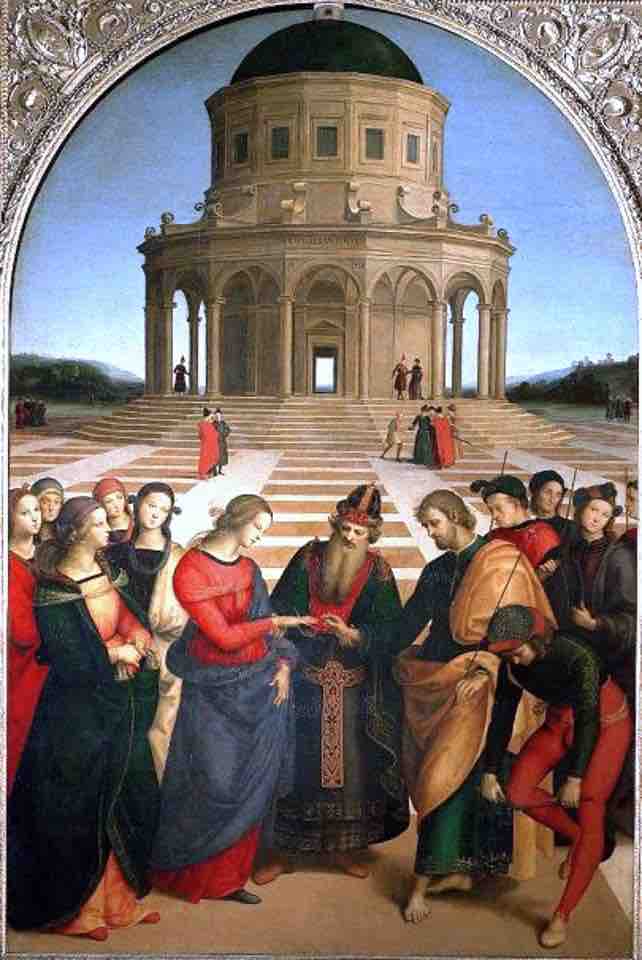The Renaissance began during the 14th century and remained the dominate style in Italy, and in much of Europe, until the 16th century. The term "renaissance" was developed during the 19th century in order to describe this period of time and its accompanying artistic style. However, people who were living during the Renaissance did see themselves as different from their Medieval predecessors. Through a variety of texts that survive, we know that people living during the Renaissance saw themselves as different largely because they were deliberately trying to imitate the Ancients in art and architecture.
Florence and the Renaissance
When you hear the term "Renaissance" and picture a style of art, you are probably picturing the Renaissance style that was developed in Florence, which became the dominate style of art during the Renaissance. During the Middle Ages and the Renaissance, Italy was divided into a number of different city states. Each city state had its own government, culture, economy, and artistic style. There were many different styles of art and architecture that were developed in Italy during the Renaissance. Siena, which was a political ally of France, for example, retained a Gothic element to its art for much of the Renaissance.
Certain conditions aided the development of the Renaissance style in Florence during this time period. In the 15th century, Florence became a major mercantile center. The production of cloth drove their economy and a merchant class emerged. Humanism, which had developed during the 14th century, remained an important intellectual movement that impacted art production as well.
Early Renaissance
During the Early Renaissance, artists began to reject the Byzantine style of religious painting and strove to create realism in their depiction of the human form and space. This aim toward realism began with Cimabue and Giotto, and reached its peak in the art of the "Perfect" artists, such as Andrea Mantegna and Paolo Uccello, who created works that employed one point perspective and played with perspective for their educated, art knowledgeable viewer.
During the Early Renaissance we also see important developments in subject matter, in addition to style. While religion was an important element in the daily life of people living during the Renaissance, and remained a driving factor behind artistic production, we also see a new avenue open to panting—mythological subject matter. Many scholars point to Botticelli's Birth of Venus as the very first panel painting of a mythological scene. While the tradition itself likely arose from cassone painting, which typically featured scenes from mythology and romantic texts, the development of mythological panel painting would open a world for artistic patronage, production, and themes.

Birth of Venus
Botticelli's Birth of Venus was among the most important works of the early Renaissance.
High Renaissance
The period known as the High Renaissance represents the culmination of the goals of the Early Renaissance, namely the realistic representation of figures in space rendered with credible motion and in an appropriately decorous style. The most well known artists from this phase are Leonardo da Vinci, Raphael, Titian, and Michelangelo. Their paintings and frescoes are among the most widely known works of art in the world. Da Vinci's Last Supper, Raphael's The School of Athens and Michelangelo's Sistine Chapel Ceiling paintings are the masterpieces of this period and embody the elements of the High Renaissance.

Marriage of the Virgin, by Raphael
Raphael was one of the great artists of the High Renaissance.
Mannerism
High Renaissance painting evolved into Mannerism in Florence. Mannerist artists, who consciously rebelled against the principles of High Renaissance, tended to represent elongated figures in illogical spaces. Modern scholarship has recognized the capacity of Mannerist art to convey strong, often religious, emotion where the High Renaissance failed to do so. Some of the main artists of this period are Pontormo, Bronzino, Rosso Fiorentino, Parmigianino and Raphael's pupil, Giulio Romano.